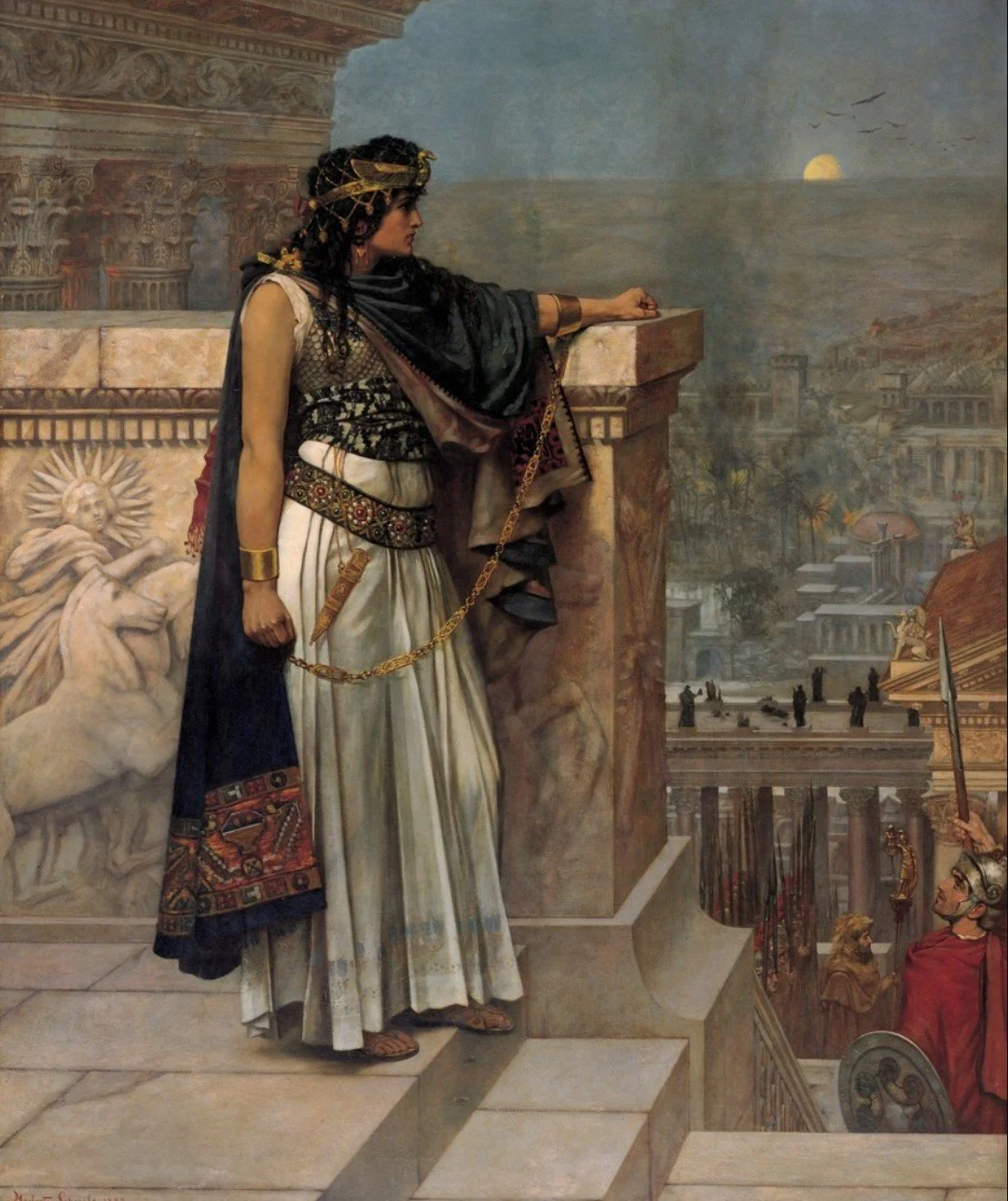Zenobia: A Worthy Warrior Queen
Zenobia: A Worthy Warrior Queen
In the year 274, Romans witnessed what the Historia Augusta described as a “most brilliant spectacle” -- a triumph on a lavish scale not seen in a generation. The Emperor Aurelian, rode through the city streets of Rome in a magnificent golden chariot said to have belonged to the king of the Goths, pulled by four matching white stags and followed by 800 pairs of gladiators, 20 elephants and hundreds of wild beasts. With a cleanup crew no doubt trailing behind.
But the showpiece of the triumph was Queen Zenobia of Palmyra. She had the stunning audacity to raise a coalition army of disgruntled Middle Easterners and briefly snatch away a third of the Roman Empire -- including its crown jewel Egypt – before being soundly defeated by Aurelian and hauled back to Rome to be put on display. The captive Syrian queen was riding along the parade route in her own magnificent chariot weighted down by so many pearls and gems that attendants had to help carry her heavy chains of solid gold.
Zenobia would have represented everything that was held despicable by the ruling male elite of Rome. She was a woman who had thrust herself into military and political spheres, which were considered bastions of masculinity. She was a rich and powerful Eastern female in a world where females were often viewed as conniving, unreliable and dangerous. She was, in short, much like the woman she claimed as her direct ancestor – Cleopatra, who had for generations been vilified as the epitome of depravity.
It would therefore follow that Zenobia, who had humiliated Rome with her military successes, would be held in contempt by the citizens who lined the streets of Rome that triumphant day - a prime target to be pelted with rotten fruit and elephant dung. Instead, the crowd stood in awe, dazzled by her legendary reputation as a chaste huntress and warrior, just like the Amazons of myth. They were impressed by her regal manner, the purple robes, the massive amount of gold and sparkling gems. She was a rock star of her era.
The ancient equivalent of public relations - both her own and that of the Emperor Aurelian’s - were a rousing success. For the first time in the Roman World, a female was viewed as a worthy leader and impressive foe.
Palmyra, Syria
A little more than a year after the defeat of Zenobia by Aurelian, much of the city was destroyed and prevent uprisings and its citizens dispersed. The graceful columns and temples were left to bake for centuries in the Syrian desert.
By the 1990s, many of the 1,500 columns that lined the main avenue were still standing, as well as temples, tombs and public buildings. Local residents still spoke Aramaic and Palmyra was a hidden gem off the beaten path. But in 2015, Islamic state militants targeted the UNESCO heritage site, blowing up an Arch of Triumph and destroying temples and parts of the theater. Syrian archeologist Khaled al-Asaad was able to hide most of the city’s greatest treasures from the militants, who executed him in the city’s public square in retaliation.
When Marc Antony captured Palmyra toward the end of the Roman Republic it was a backwater outpost with a handful of inhabitants. But over the next two centuries it grew to become one of the wealthiest and most strategic cities of the Empire.
An oasis situated halfway between the Mediterranean and the Euphrates River, Palmyra was the first Roman outpost reached by caravans from China taking the long overland trek known as the ‘Silk Road.’ Camels laden with bolts of silks, incense and spices would dutifully trudge down the kilometer-long main avenue of the city, where merchants stopped to refresh their beasts and pay hefty taxes.
From all outward appearances Palmyra was a Roman city; a sprawling metropolis of monumental arches and Corinthian colonnades, with theatres and public baths and a senate. But the residents of Palmyra were from Assyrian nomadic stock and at home in the desert. Images of camels were everywhere and residents were depicted wearing heavily-embroidered bright colored silk robes.





